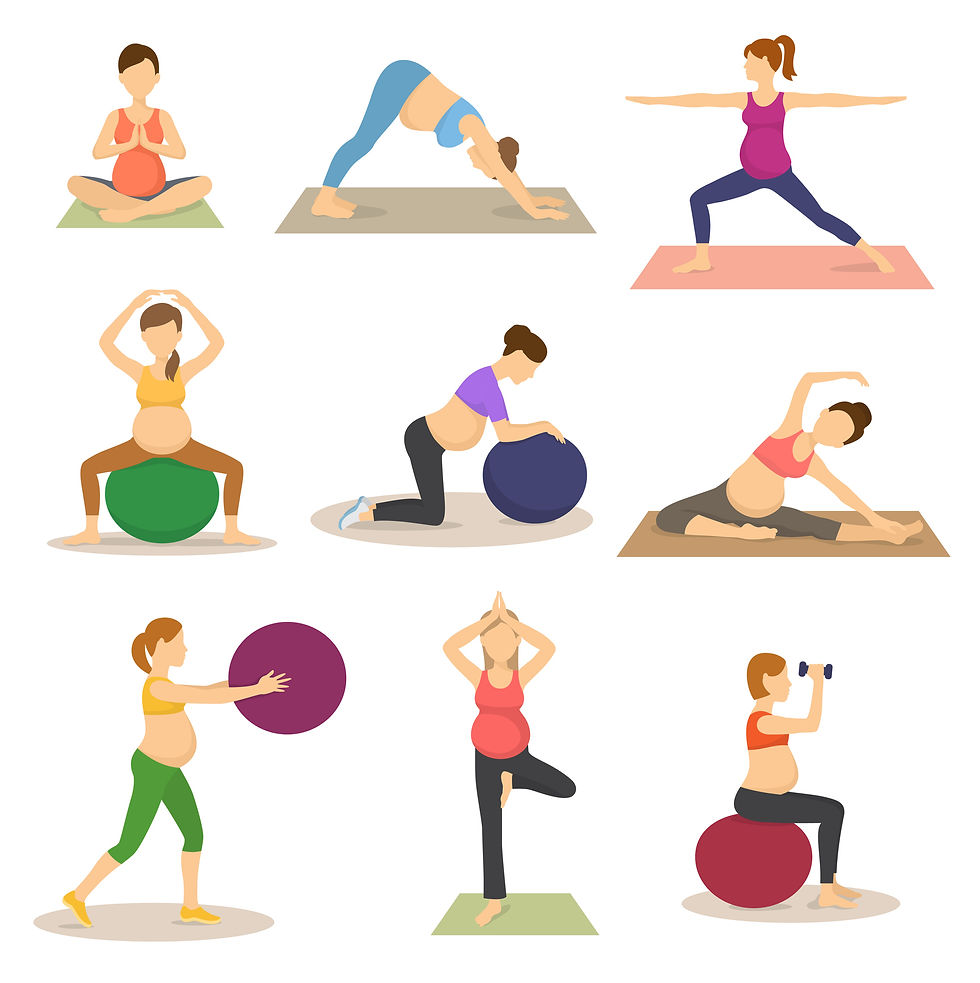Safe Core Exercises for Pregnancy
- gudrais
- Jan 19, 2019
- 3 min read

By Erin Peterson
Living Vibrantly community member
I was not focused on exercise during my last pregnancy, and my nutrition was half-hearted most of time, since the was so much other stuff to take in as an expecting first-time mom. So, it may come as no surprise to some that I had never heard of diastasis recti until much later, when I was in a breastfeeding support group after my (now) toddler was born. It was another (very experienced) mom who told me about it, and showed me how to check for it. But, now that I'm well into another pregnancy, and very physically active, it's something that I've been aware of since my first trimester. I've been checking my gap and how much various core exercises make my abs bulge.
As background, diastasis recti is a separation of the abdominal muscles (specifically, the two sides of the rectus abdominis) due to the connective tissue between them being softer and looser because of pregnancy hormones. This is a weakening of the structure of the abdominal muscles, and can get worse over time (even after birth) as the muscles tend to pull apart even more, unless a woman knows how to work to correct the problem and prevent additional damage. Many women also are self-conscious about their abdominal separation for cosmetic reasons (it can lend the appearance of a "pooch.")
Diastasis recti can be healed after pregnancy with the help of physical therapy, but it's also possible to avoid getting it in the first place—while still having an active pregnancy. I've compiled a list of core exercises that are helpful during pregnancy (and early postpartum), as well as some exercises that should be avoided. (There are actually many benefits to doing core exercises during pregnancy.) I hope other moms find it helpful.
Benefits of core exercises:
increased flexibility
stronger core muscles
improved strength and endurance
more energy for daily activities
supports pelvic organs as uterus grows
alleviates pressure on back by helping with better posture
improves your ability to cope with labor
prepares body for labor by toning the abs for contracting during the pushing phase
may help with quicker postpartum recovery
(Sources: https://www.whattoexpect.com/pregnancy/abs-exercises and https://www.momjunction.com/articles/abdominal-exercises-during-pregnancy_00366835/)
Suggested core exercises to do during pregnancy:
sitting knee lift
side-lying crunch
core breath
seated stability ball hold
side plank*
standing crunch
standing bicycle
standing toe touches
plank*
kegels*
squats*
cat/cow pose*
side-lying leg lifts
side-lying knee lifts
bird dog* (a.k.a. prone stretch and tuck)
standing pelvic tilt
hip hiker
"no-crunch" crunches
scissor kicks
heel slides
single heel drop
engage the transverse abdominis
Asterisks (*) mark the exercises I've seen or done most frequently in prenatal workouts. Explanations and illustrations of most of these exercises can be found at https://www.momjunction.com/articles/abdominal-exercises-during-pregnancy_00366835/
Exercises to avoid:
sit-ups
double-leg lifts (I do these with my knees bent at a 45-degree angle and do a smaller range of motion, or I substitute single-leg lifts)
supine exercises later in pregnancy (many websites suggest this modification after the first trimester, but one of my OB/GYNs said it was okay until 28 to 30 weeks; also, there are simple alternatives, like doing these exercises at an incline with a pillow, wedge, or adjustable angle weight bench, so that the heart is above the uterus)
Please keep in mind that there are other safety tips, which can be found by reading the articles linked above—but the biggest tip is to listen to your own body. By doing this, I've become more comfortable and confident through learning how to modify exercises for my continually changing body. This has also empowered me to do several "regular" workout programs, rather than feeling limited to only prenatal workouts (which there are obviously fewer of to choose from).






























Comments